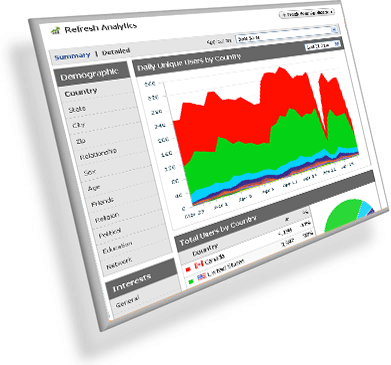 Leveraging “Big Data” is coming up more and more as a “must have” in conversations I’m having with clients and prospects, not only in the food and beverage industry, but in other industries that have supply chain applications as an integral part of their operations.
Leveraging “Big Data” is coming up more and more as a “must have” in conversations I’m having with clients and prospects, not only in the food and beverage industry, but in other industries that have supply chain applications as an integral part of their operations.
 Leveraging “Big Data” is coming up more and more as a “must have” in conversations I’m having with clients and prospects, not only in the food and beverage industry, but in other industries that have supply chain applications as an integral part of their operations.
Leveraging “Big Data” is coming up more and more as a “must have” in conversations I’m having with clients and prospects, not only in the food and beverage industry, but in other industries that have supply chain applications as an integral part of their operations.
The commonality between the companies I talk to is that they are all trying to seek out that additional growth, revenue and profit, and the lure of using Big Data to do so is very appealing. Some of the pressure translates into more and more frequent requests by logistics and supply chain teams to use “Big Data” to optimize inventory allocation decisions and to develop a comprehensive view of what exactly is selling and at what velocity it is moving through the supply chain. But is Big Data the super solution for besting competitors or driving value from in-house data that all hope it is?
The answer is it depends.
For this discussion, let’s start by getting on the same page in terms of terminology around data and information. Big Data is synonymous with machine-generated data, it’s a byproduct of computer processes and applications. It’s automatically generated passively, without any manual data entry by an end user.
On the one hand, it’s the 40 billion photos on Facebook, or the million customer transactions Walmart collects every hour and uploads into their database. It’s unstructured and never modified. Big Data is a reliable, historical record that will account for most of the six fold increase in data growth experts expect over the next few years. Most of this quite frankly is data exhaust – collected, but never to be used data about everything imaginable.
On the other hand, utilizing Big Data holds the promise of analyzing extraordinary volumes of information to improve operations, reduce waste, enhance promotions, and ultimately delivering products more efficiently to manufacturers, retailers, and consumers. There is tremendous value in big data, so no surprise that everyone is scrambling to harness it, albeit with varying degrees of success and rationalization.
Traditionally, business intelligence (BI), is what decision makers have always used to inform their strategies and tactics for growing and staying competitive. Organizations expressly develop plans and methods to gather data from various business processes for BI solutions. BI is highly structured, detailed, and valuable. But BI is also retrospective, and has its limitations as a barometer for future performance. Big Data may have similar limitations; the crystal ball is nowhere close to being perfected.
But the ability to gather Big Data in real and near-real-time opens up new possibilities for optimizing your supply chain and acting proactively to decrease operating expenses, drive sales and increase profit margins. Appropriately used, Big Data can be a powerful asset which helps companies understand their customers and predict demand for different goods and services. Leveraging Big Data also allows companies to develop smarter supply chain processes and procedures. And finally, using Big Data and Big Data analytics, companies can forecast revenue, create cash flow strategies and optimize their sales and operations planning.
Ideally, companies will want the ability to join BI and Big Data sources simultaneously for the delivery of smarter and faster outputs. But with the shortage of people versed in deep analytics and given the mind-boggling volumes and variety of data coming from social media, context-aware mobile data, video and databases, it’s going to take a while.
As you may know from reading my blog, I’m a big believer in thinking big but starting small. The best approach is to start with specific business goals and let these drive the balance between improving the data you currently use for BI and adding Big Data to the mix. Developing a plan that lets you bring in that Big Data and combine it with your BI insights will unearth the hidden value in those assets, and provide the all-important competitive advantage — without burying you in an avalanche of irrelevant numbers. Find the right balance between the two and chances are you can hit a home run and your customers, employees, suppliers and shareholders will all love you for it.








